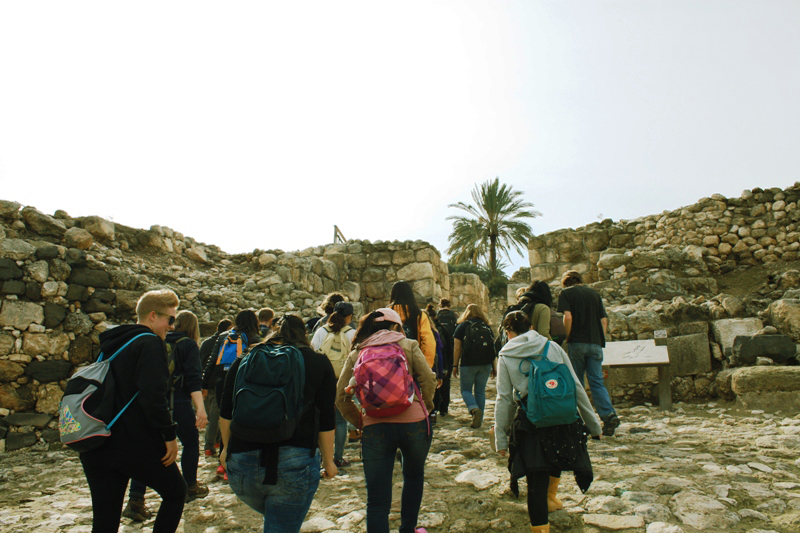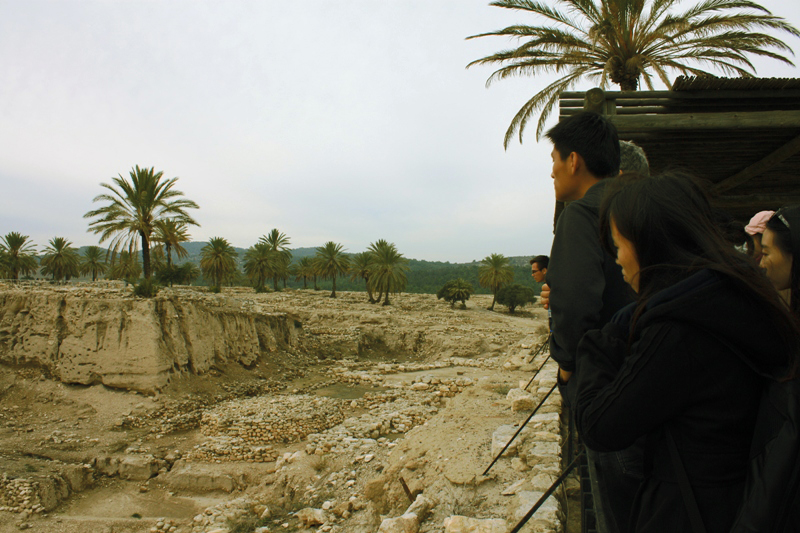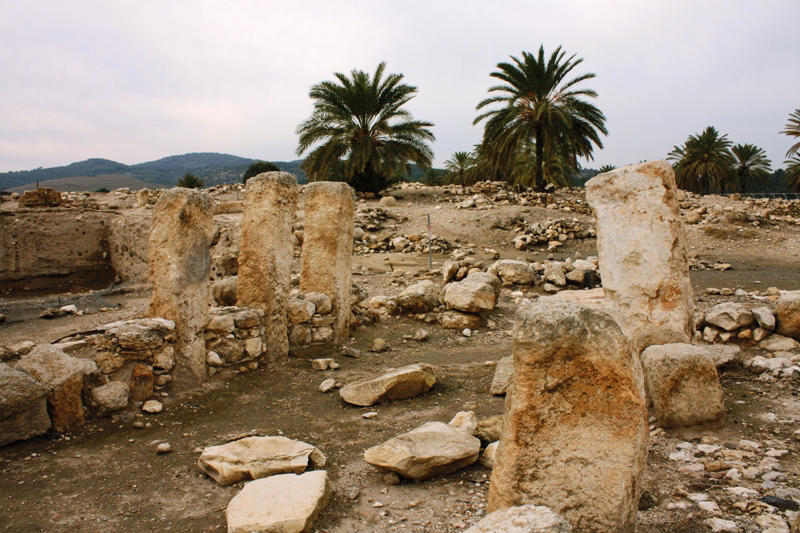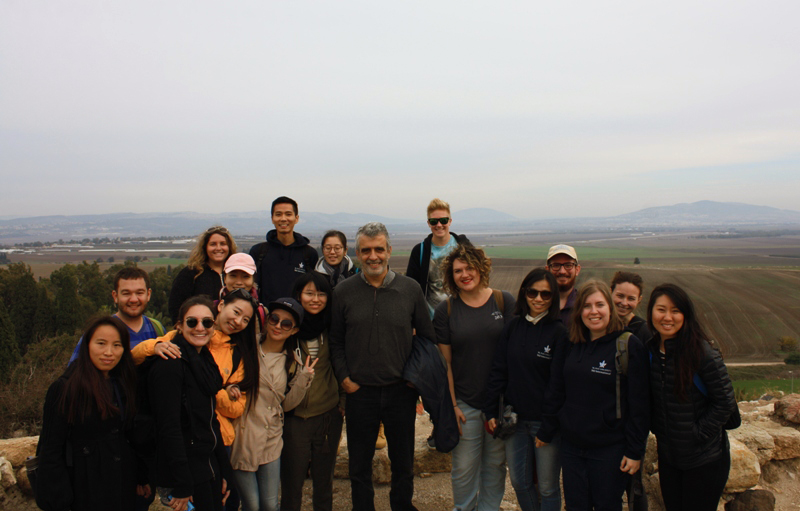The End of Days: An Archaeological Tour of Tel Megiddo / by Benjamin Douglass
Recently we had a field trip to Megiddo, the site of the last battle between the forces of heaven and the forces of evil.
While going on a tour of literal Armageddon is pretty cool in and of itself, this tour was special because we went with Prof. Israel Finkelstein, the man in charge of the excavations there. This gave us an insider’s, detailed look at the site, the finds, and stories of the excavations, following the seminar we had recently taken about Megiddo, with Prof. Finkelstein.
Walking the geographical path
Part of the importance of Tel Megiddo is its geographic location guarding the pass between the coastal plain, or known as the ancient Via Maris, and the Jezreel Valley, the route inland to Damascus and Mesopotamia. Pharaoh Thutmoses III used the pass to launch a surprise attack on the defending army at Megiddo, and wrote extensively about his feats in inscriptions in Egypt. This path through the Carmel Ridge, known in ancient times to the Egyptians as the Aruna Pass, is today the route that the highway takes as well. As we drove through the steep hills, I could only imagine what it would have looked like 3000 years ago as an Egyptian army marched the exact same path that we were driving on.

The importance of Tel Megiddo is its geographic location. As we drove through the steep hills, I could only imagine what it would have looked like 3000 years ago as an Egyptian army marched the exact same path that we were driving on.
4,000 years of stratigraphy, and 100 years of excavations
Our tour of the ancient tel began at the gate, where Israel Finkelstein explained how to use the stratigraphy and orientation of the seven different gates that have been archaeologically identified. One of these gates has been partially reconstructed to give the public an idea of what the ancient site may have been like when you walked through the entrance.

Walking through one of Tel Megiddo's Gates
We followed Israel in through the gate and into the entrance courtyard, where he explained 4,000 years of stratigraphy that was visible in the excavation cuts that were all around us, as well as the one-hundred year history of excavations at the site. The first excavator, Gottlieb Schumacher, was a pioneer in archaeology in the Levant in the very early 20th century. The University of Chicago conducted extensive excavations at Megiddo during the 1920s and 1930s, cutting out large chunks of the mound. Yigal Yadin conducted some small excavations in the 1960s, and Israel Finkelstein has been the coordinator for the past 20 years. All of these excavations make Tel Megiddo one of the best understood and most important archaeological sites in Israel.

Prof. Israel Finkestein and students at the Megiddo entrance courtyard
Bronze Age temple, stables and tombs
From the gate entrance Israel guided us to the eastern temple complex, where recent excavations have unearthed the foundations and floor of a massive Bronze-Age temple. Here he explained the difficult topography and geology of the mound, explaining that the elevation of the mound didn’t always signify a structure’s age. Also important was that an artificial platform had to be built to support the temple complex since the original hill was not large enough to support the builder’s ambitions. All of this points to an incredibly complex and sophisticated city and administration that rivaled any other location in the ancient world at the time.

Looking down towards the Bronze Age Temple at Tel Megiddo
Israel continued our tour, showing us the palace and stables, the large trench cut through the side of the tel, the Iron Age city wall (and U of Chicago trolley construction), the Royal Tombs, and the metalworking area.

The Megiddo Stables
The insider’s guide
Since he previously taught us the history and details of the site in our seminar, he didn’t explain much of the general information about the site to us while we were on the tour. He focused mostly on showing us the locations that he has talked about in class, while giving footnote information and interesting stories. He talked about the difficulties of conservation and restoration, the importance of stratigraphy, and the myths that surround the excavations. One funny story was the explanation for the many palm trees that dot the surface of Tel Megiddo. It is said that during the excavations by the University of Chicago one of the foremen, who was from Egypt, would take snack breaks, sit down, and eat a handful of dates. He would then toss the pits over his shoulder, and this is how the palms were planted.

Getting the insider's scoop behind Tel Megiddo's Palm Trees
We finished the tour by walking through the water tunnel, which is dated at least to the Iron Age but maybe even older. The descent is steep, and the end leads outside the tel and onto the road. The entire day was a wonderful experience that really supported our classes at Tel Aviv University. To see the buildings and locations that we have been learning about in class is such an advantage, and to be at the site with the expert and master, Israel Finkelstein, is the best opportunity anyone can hope for.

Getting the insider's scoop behind Tel Megiddo's Palm Trees

